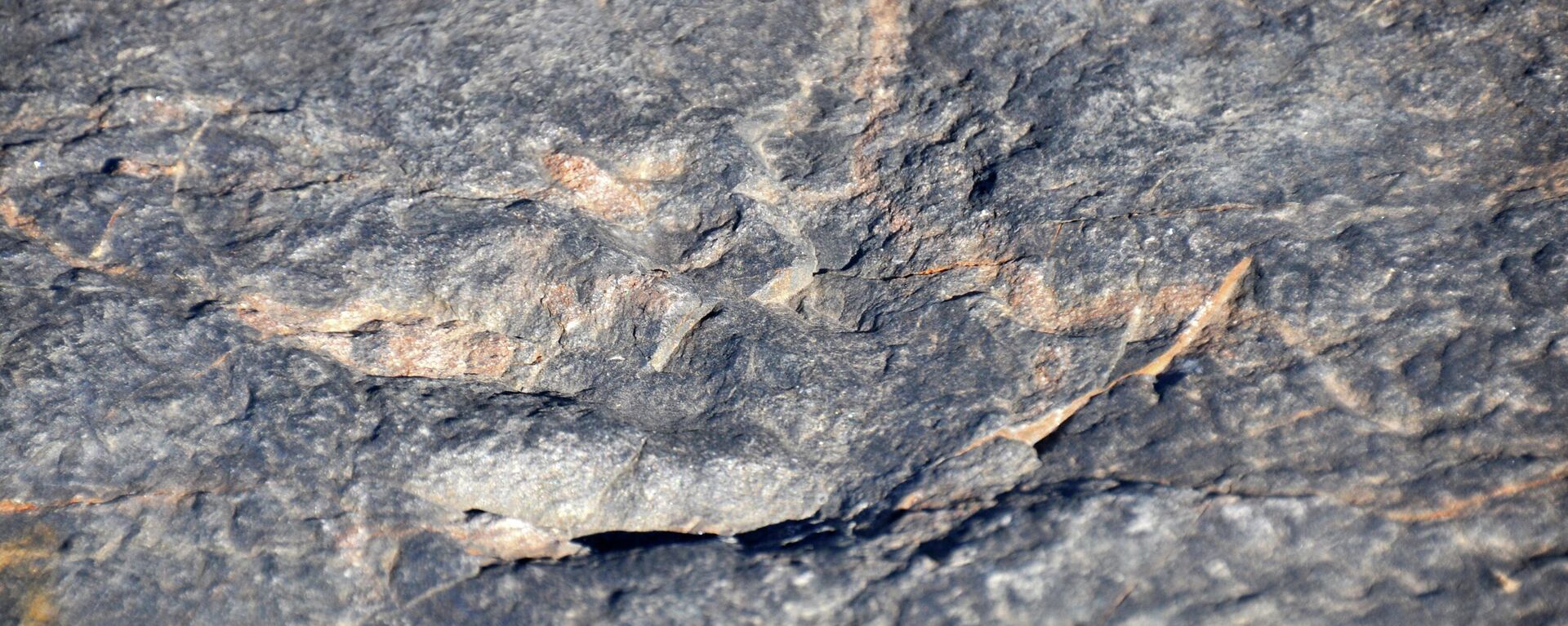https://sputnikglobe.com/20221014/unique-predatory-dinosaur-discovered-in-sweden-wows-researchers-1101832166.html
Unique Predatory Dinosaur Discovered in Sweden Wows Researchers
Unique Predatory Dinosaur Discovered in Sweden Wows Researchers
Sputnik International
While the idea that dinosaurs actually inhabited present-day Sweden is not new per se, the fact that it was roamed by carnivorous giants up to 10 meters in... 14.10.2022, Sputnik International
2022-10-14T05:49+0000
2022-10-14T05:49+0000
2022-10-19T20:27+0000
science & tech
newsfeed
scandinavia
sweden
dinosaur
news
https://cdn1.img.sputnikglobe.com/img/07e5/0a/13/1090035504_0:205:1280:926_1920x0_80_0_0_6dd207a72d25055769e1924a380b4a0f.jpg
A unique find of a hitherto unknown dinosaur species has been made in Skåne County in Southern Sweden.The remains of the dinosaur, which is believed to have been a giant beast measuring up to 10 meters long, were unearthed in a clay quarry in Billesholm, where around 8,000 discoveries from the end of the Triassic period (around 200 million years ago) were made in recent years.The researchers have found a lot of footprints from the dinosaurs. Some measured up to 70 centimeters wide; this figure was used to gauge the overall body size.The fact that dinosaurs inhabited present-day Sweden is not news, but the fact that it was roamed by such carnivorous giants comes as a complete surprise to researchers.One of the most startling finds was a dinosaur's lower jaw.Bit by bit, the researchers have unearthed more and more shards of bone from the clay layers in Billeholm and gradually pieced together the skeleton parts.Dinosaurs are a diverse group of reptiles that first appeared during the Triassic period. They became the dominant terrestrial vertebrates following the Triassic–Jurassic extinction event some 201 million years ago, with their dominance continuing throughout the Jurassic and Cretaceous periods (until 66 million years ago).The largest of them are estimated to have reached lengths up to nearly 40 meters and heights of up to 18 meters, becoming the largest land animals of all time.The very name “dinosaur” (meaning “terrible lizard”) was coined in mid-19th century to denote the first recognized dinosaur fossils.
https://sputnikglobe.com/20220703/dinosaurs-likely-inhabited-earths-cold-polar-regions-even-during-triassic-period-research-says-1096901626.html
scandinavia
sweden
Sputnik International
feedback@sputniknews.com
+74956456601
MIA „Rossiya Segodnya“
2022
News
en_EN
Sputnik International
feedback@sputniknews.com
+74956456601
MIA „Rossiya Segodnya“
Sputnik International
feedback@sputniknews.com
+74956456601
MIA „Rossiya Segodnya“
science & tech, newsfeed, scandinavia, sweden, dinosaur, news
science & tech, newsfeed, scandinavia, sweden, dinosaur, news
Unique Predatory Dinosaur Discovered in Sweden Wows Researchers
05:49 GMT 14.10.2022 (Updated: 20:27 GMT 19.10.2022) While the idea that dinosaurs actually inhabited present-day Sweden is not new per se, the fact that it was roamed by carnivorous giants up to 10 meters in length came as an utter surprise to researchers.
A unique find of a hitherto unknown dinosaur species has been made in Skåne County in Southern Sweden.
The remains of the dinosaur, which is believed to have been a giant beast measuring up to 10 meters long, were unearthed in a clay quarry in Billesholm, where around 8,000 discoveries from the end of the Triassic period (around 200 million years ago) were made in recent years.
The researchers have found a lot of footprints from the dinosaurs. Some measured up to 70 centimeters wide; this figure was used to gauge the overall body size.
The fact that dinosaurs inhabited present-day Sweden is not news, but the fact that it was roamed by such carnivorous giants comes as a complete surprise to researchers.
“This will have a big effect on the dinosaurs' early development history and how they reached the dominance they subsequently achieved,” Per Ahlberg, a professor of paleontology at Uppsala University, told national broadcaster SVT.
One of the most startling finds was a dinosaur's lower jaw.
“Immediately when I saw it, I felt: wow! We hit something big here,” paleontologist Grzegorz Niedźwiedzki, who made the find, told SVT.
Bit by bit, the researchers have unearthed more and more shards of bone from the clay layers in Billeholm and gradually pieced together the skeleton parts.
Dinosaurs are a diverse group of reptiles that first appeared during the Triassic period. They became the dominant terrestrial vertebrates following the Triassic–Jurassic extinction event some 201 million years ago, with their dominance continuing throughout the Jurassic and Cretaceous periods (until 66 million years ago).
The largest of them are estimated to have reached lengths up to nearly 40 meters and heights of up to 18 meters, becoming the largest land animals of all time.
The very name “dinosaur” (meaning “terrible lizard”) was coined in mid-19th century to denote the first recognized dinosaur fossils.


